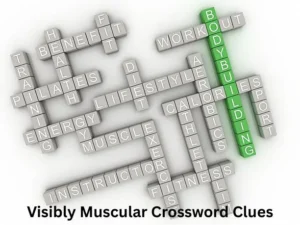The internet looks fun on the surface. Buttons. Menus. Color. Easy clicks. But behind each page, there’s a secret layer. That layer shows how websites work. You can peek at that layer using something called “view-source.”
A good example is this link:
view-source:rockingwolvesradio.com/main/chatroom/chatroom.html
It may look odd at first. But it holds clues. This one small page can teach us big things. It shows how online communities are built. It reveals how older tools like HTML and JavaScript still power many sites in 2025. Let’s explore why this hidden code matters and what it tells us.
Why This “View Source” Tool Still Matters
When you type view-source: before a link in your browser, you see plain code. This is the basic structure of a page. It’s like peeling back the skin and looking at the bones.
Developers, students, or curious users often use it to:
- Learn how pages are made
- See how chatrooms work
- Spot harmful code
- Understand page design choices
Tools like Chrome or Firefox make this easy. Just add view-source: before any site address. You’ll see text, tags, and scripts. This isn’t a normal website view. It’s the blueprint.
What Is Rocking Wolves Radio?
We don’t need outside info to guess what the site does. From the name, rockingwolvesradio.com, it seems like a music site. Maybe they stream songs. Maybe they host live shows. Maybe they have a close-knit fan group.
The rest of the link gives more hints:
/main/chatroom/chatroom.html
- main/ is probably the folder with key pages
- chatroom/ holds tools for talking
- chatroom.html is likely the chat space itself
This setup is old-school. It doesn’t use fancy tools like React or Vue. Instead, it sticks to basics. And that’s okay. Sometimes simple is better.
What’s Inside chatroom.html?
Let’s break down what you might find when you look at the source code.
1. HTML Tags and Layout
You’ll likely see something like this:
html
CopyEdit
<!DOCTYPE html>
<html lang=”en”>
<head>
<meta charset=”UTF-8″>
<title>Rocking Wolves Chatroom</title>
</head>
<body>
This tells us:
- The page uses HTML5
- The language is English
- The title is about the chatroom
These first lines set the stage for everything else.
2. Style Sheet Links
Next, it will pull in a file for design, like this:
html
CopyEdit
<link rel=”stylesheet” href=”/styles/chat.css”>
That file controls colors, shapes, and layout. It might also support mobile screens or offer dark mode.
3. Scripts That Run the Chat
Here’s where things get active. You’ll see code that makes chat happen:
html
CopyEdit
<script src=”/scripts/chat.js”></script>
And maybe something like:
javascript
CopyEdit
const socket = new WebSocket(‘wss://rockingwolvesradio.com/chatroom’);
socket.onmessage = function(event) {
showMessage(JSON.parse(event.data));
};
This code connects your screen to the live chat. It lets messages flow back and forth instantly.
4. Chatroom Inputs
Now you’ll spot items like:
html
CopyEdit
<div id=”chatbox”></div>
<input type=”text” id=”messageInput” placeholder=”Type here…”>
<button onclick=”sendMessage()”>Send</button>
These are the tools people use to talk. Easy. Clean. Simple.
Why Should You Care About This Code?
You might ask: why look at the code behind a small chatroom? But there are good reasons.
1. Check for Safety
Is the chat safe to use? Look for signs of secure connections. Does it use WSS (WebSocket Secure)? Is user input cleaned or filtered?
2. Learn How It Works
If you want to build something, studying simple code is helpful. You’ll learn:
- How messages get sent
- How pages update fast
- How data travels
3. See What The Community Values
Look closer. Is there a place for rules or mods? Are names checked before people join? Are there protections from spam?
These small things show what the site cares about.
4. Trust and Openness
When sites let you view their code, it shows honesty. You can see what’s running. No tricks. No hidden ads. Just open tech.
Digging Into the Details
Let’s go even deeper into what you might discover in the code.
Live Connection Setup
Real-time chats use something called WebSockets. That’s how messages move without reloading the page.
This line reveals it:
javascript
CopyEdit
const socket = new WebSocket(‘wss://rockingwolvesradio.com/chatroom’);
This shows the server is always listening, ready to send or receive messages.
Cleaning the Messages
Here’s how you know if it protects users from code attacks:
javascript
CopyEdit
function cleanInput(input) {
return input.replace(/</g, “<”).replace(/>/g, “>”);
}
If this function is there, the site is guarding users against harmful scripts.
Fast, Clean Pages
Smaller websites often load fast. They only use one or two external files. If you don’t see a ton of links, that’s good! It means fast load times, even on slow networks.
It’s More Than Just Code—It’s Culture
This page isn’t only about chatting. It’s about connection. Maybe it’s for music fans. Maybe for friends who tune in together. Maybe for strangers who become family.
The code can show:
- If chat history stays or disappears
- If usernames are saved or cleared
- If users agree to rules before joining
These things say a lot about what the group stands for.
Kind Code for Small Groups
Big companies write code to serve millions. But this kind of code is for the few. For real people. For inside jokes and late-night talks. For sharing a song and a smile.
The code at
view-source:rockingwolvesradio.com/main/chatroom/chatroom.html
isn’t built for clicks. It’s built for care.
You can tell by looking at it. Simple HTML. Basic JavaScript. Light on the browser. Heavy on the heart.
Tips for New Coders
Want to learn to code? Start here. Simple pages like this teach real lessons.
Here’s what to notice:
- Clear structure is still important
- You don’t need fancy tools to build cool stuff
- Small pages can do big things
- Real-time chat is possible without big frameworks
- Neat code is good user experience
Final Thoughts: Why Source Code Still Matters
Today, many sites hide behind layers of tools. Code gets wrapped, minimized, or locked. But not here.
At
view-source:rockingwolvesradio.com/main/chatroom/chatroom.html,
you can see everything. You can learn. You can admire. You can grow.
That’s what makes view-source special. It’s like reading a book behind a movie. It’s quiet. Honest. Open.
In a time when the web can feel too big or too fake, pages like this bring us back. Back to basics. Back to truth. Back to community.













